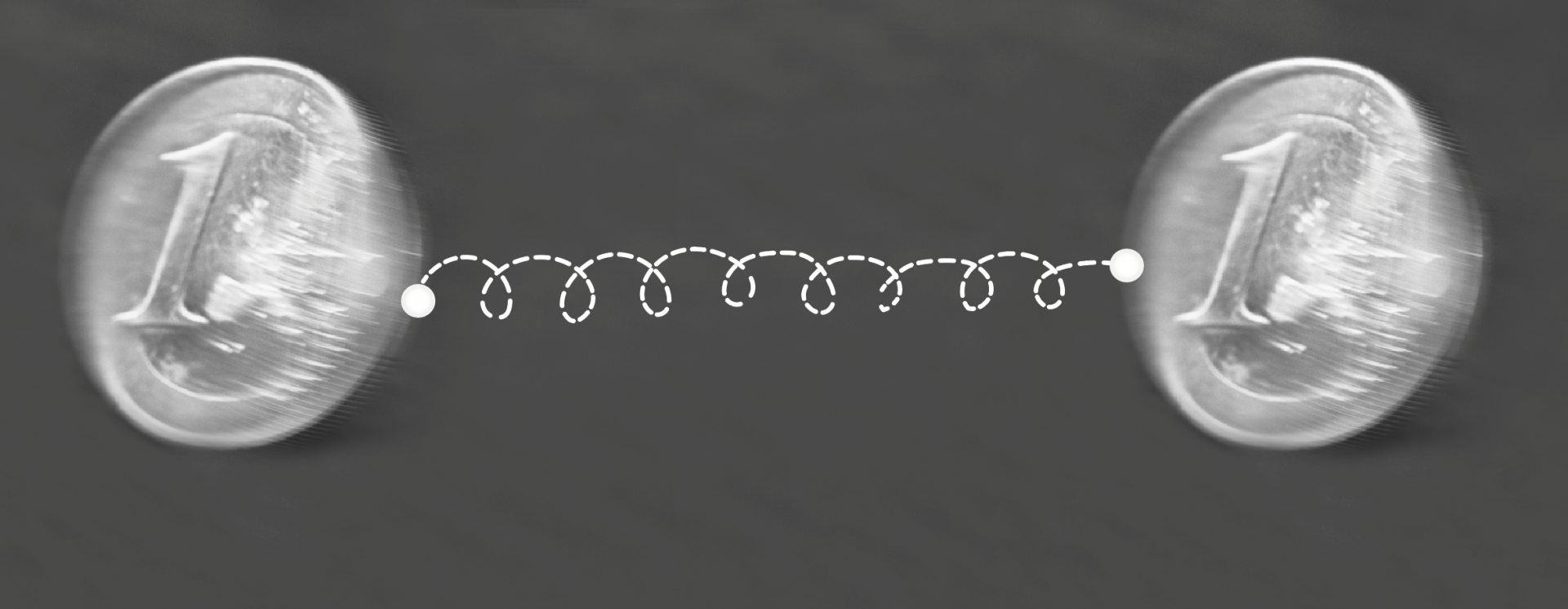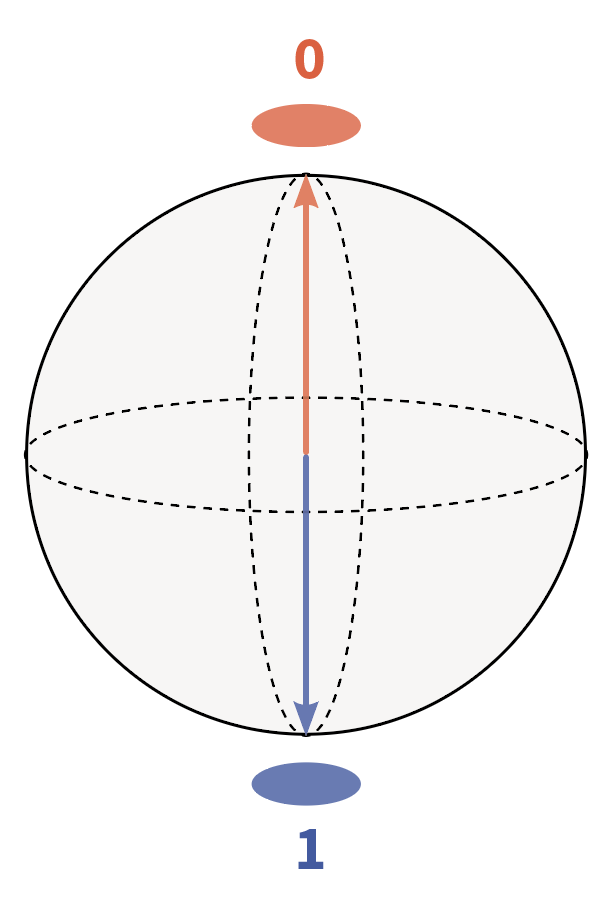The basics to understand Quantum Internet
In our everyday lives we experience the world according to the rules of classical physics. However, at much smaller scales, the scales of atoms and electrons, we enter a world where different rules apply: the rules of quantum mechanics. Since we don’t experience this in our everyday lives, it’s really hard to imagine quantum mechanics. To understand the working of a quantum internet, you have to understand the three ways in which quantum mechanics, at its core, differs from classical physics.
These three concepts are quantum superposition, measurement and entanglement.
Qubits
Before diving into the three concepts of quantum mechanics, it’s important to know that the building blocks of a quantum internet are quantum bits, or qubits. Qubits can be compared to classical bits, except that qubits work with these three concepts of quantum mechanics. We represent a qubit as a sphere that has value 0 on the north pole and value 1 on the south pole. While a classical bit can only take value 0 or value 1, a qubit can have any value on this sphere. This brings us to the concept of superposition: a qubit can take the value of 0 and 1 at the same time!
It’s like a spinning coin, if you look from above it’s heads and tails at the same time
The first concept: Superposition
The first concept is quantum superposition: in quantum mechanics, objects are allowed to be in two places at the same time. This is a strange concept, but the fact that things can be in two places at the same time is something that you just have to accept: if it were not true, every atom in every object on the earth would collapse into itself on a time scale of a few picoseconds. The fact that the matter we are made of is stable, was one of the most spectacular predictions of quantum mechanics.
We don’t experience super-position in our daily life: for us, an object is never in two places at the same time. To get a feeling of what superposition means, imagine spinning a coin on its side. If you look from above to the spinning coin, you can see both sides of the coin: it is like the coin is both heads as well as tails in that specific moment in time, just like a qubit can be in two states at the same time.
The second concept: Measurement
The second strange thing about quantum mechanics is what happens when you look: in classical mechanics, looking at something does not change the ‘state’ of that thing. If you look at a car driving down the road, the car is still driving down the road after you have looked at it. This, it turns out, is different in quantum mechanics. If you look at a quantum superposition of an object – the object is in two places at the same time – the object itself will ‘jump’ to one position or the other. The fact that you have acquired knowledge about the object has changed its state. In the analogy of the spinning coin, you can compare this looking at the coin to slapping the spinning coin on the table: the coin is forced to choose a side. This second ‘strange’ property of quantum mechanics has been confirmed by decades of experiments.
Keeping your information is a difficult task
Maintaining the superposition state of a qubit is quite a challenging task and one of the difficulties in building a quantum internet. Physical qubits decohere after some time, meaning the qubit isn't in superposition anymore, but takes on a value of 0 or 1. In the analogy of the spinning coin this means that after some time, the coin loses speed and falls over to one side. The coin obtains either the value 'heads' or the value 'tails'.
The third concept: Entanglement
The third concept is that of entanglement: two qubits can have an extremely strong connection. If two qubits are entangled, and both qubits are measured, the outcome for each qubit will look random. But, once you compare the outcomes, you find that they match up in ways that are simply impossible to achieve with classical bits. The outcomes can only be explained if the measurement on one qubit has somehow influenced the other qubit.
This entanglement remains in existence when the two qubits are sent far apart. Say, one qubit is sent from Delft to New York, and the other from Delft to Tokyo. A measurement then taken on the New York qubit immediately influences the Tokyo qubit. Returning to the analogy, entanglement of two spinning coins means that if you repeatedly spin and slap both coins on the table, you will find ‘heads’ and ‘tails’ in combinations that are impossible, unless the coins have immediate interaction with each other, even while one is in New York and the other in Tokyo.
Einstein referred to entanglement of qubits as ‘spooky action at a distance’. It may be spooky from the perspective of our daily lives, yet on the scale of atoms and electrons it is a regular phenomenon.

...they have an extremely strong connection.
